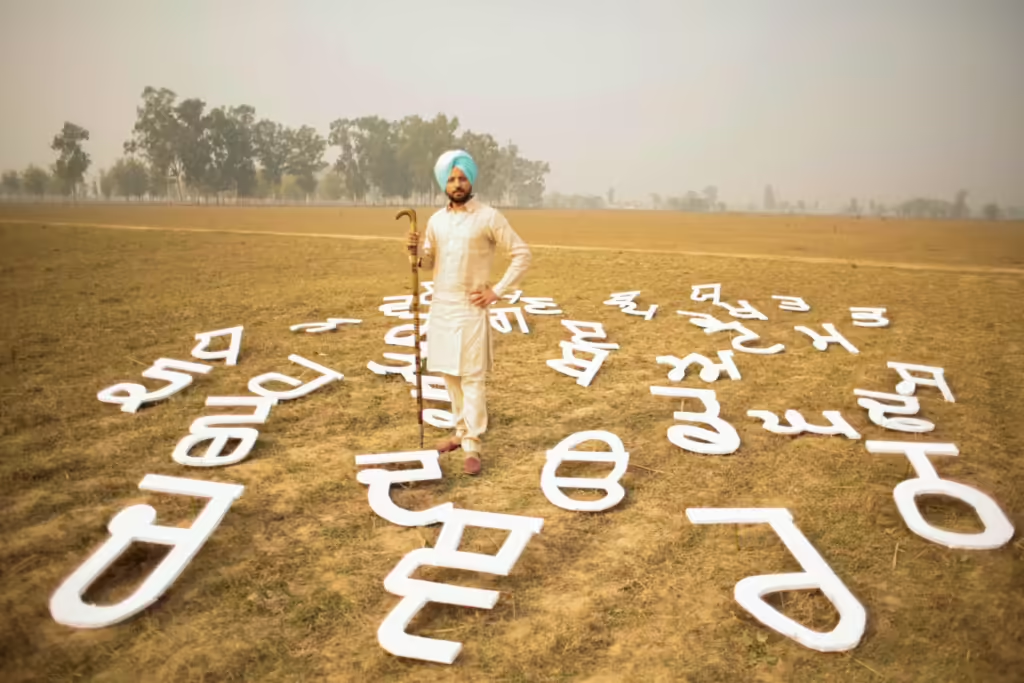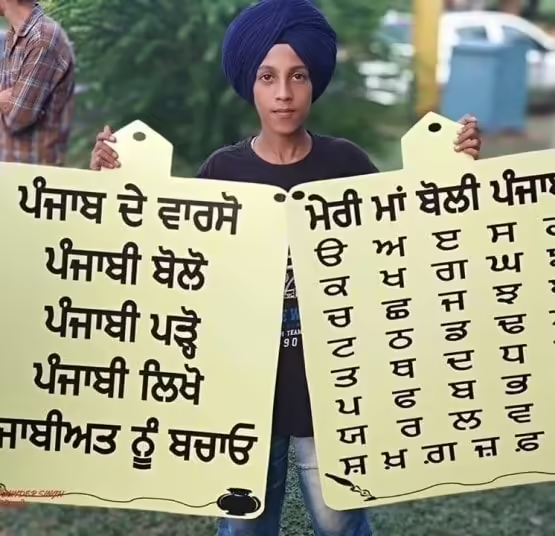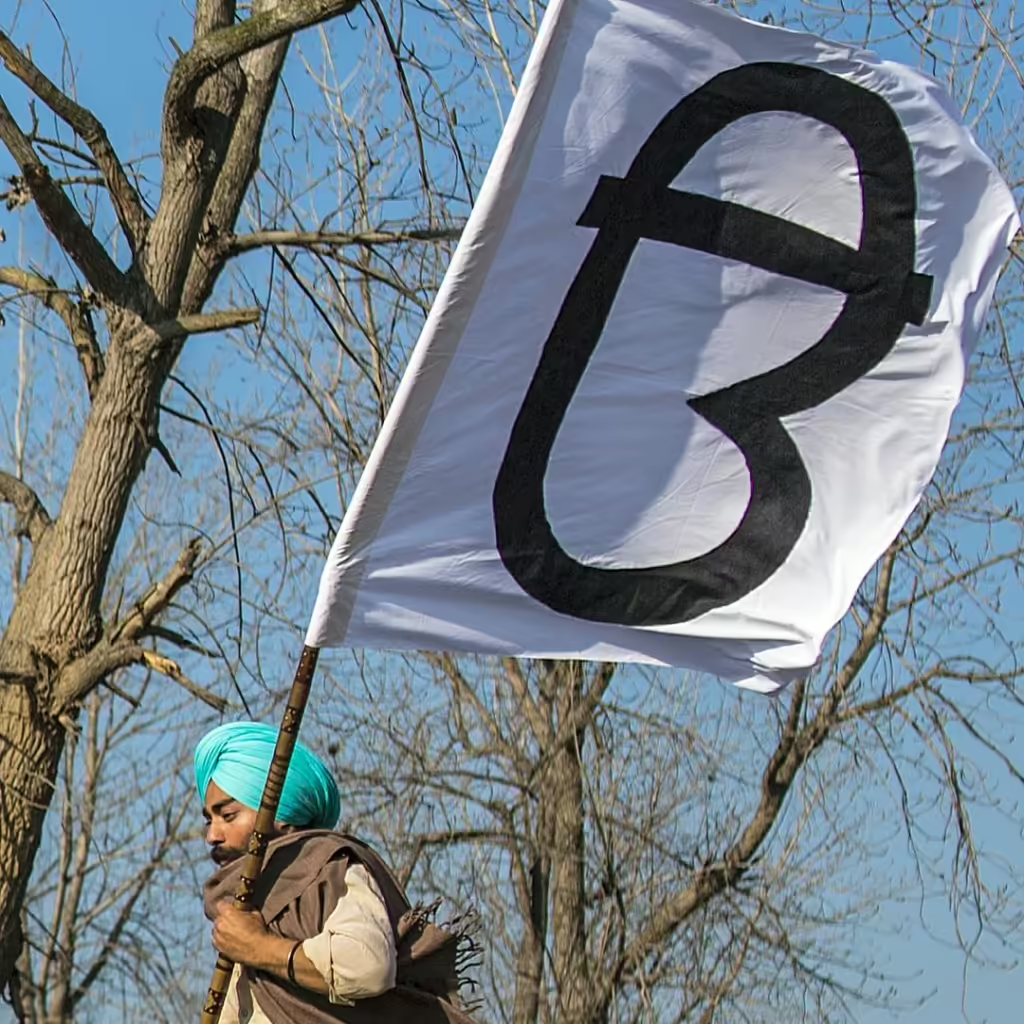Author Hardeep Singh
Despite being a language that is spoken by a considerable population of the world, Punjabi is facing an existential crisis in the region where it is the mother-tongue of the residents. According to the report published in ‘Babel Magazine’ few years ago, Punjabi is at 10th place among the first ten languages which are most spoken in the world.
According to the report the first language is the Chinese language, which is spoken by about 1.2 billion people (120 crore). The second most spoken language is Spanish, which is spoken by 400 million people (40 crore). English comes in third place, which is spoken by 360 million (36 crore) people. At the fourth, Hindi, fifth on the Arabic which 250 million (2.5 crore) people speak, then on sixth, Bengali on the seventh, Russian on the 8th, Japanese at 9th and 10th according to ‘Babel Magazine’ Punjabi language is spoken by some 100 million people.
According to Britannica, there were about 30 million speakers of Punjabi in Punjab and various states of India. In Pakistan-administered Punjab, the population of the Punjabi speaking community is some 70 million. However, it does not have recognition as an official language except in India-administered Punjab which is dominated by Sikhs.
Punjabi loving activists and scholars are concerned over the slow death of this language owing to the dominance of Hindi in India and Urdu in Pakistan. Hindi and Urdu words are replacing Punjabi words gradually, because these both languages are state languages in the Indian sub-continent. Idioms which are the soul of a language, and symbolize its distinctiveness are disappearing from the parlance of masses very fast.
If Punjab language is still alive to many extent, this is because of the contribution of the Sikhs largely. Though Punjabi language is mother tongue of the Punjabis irrespective of their faith, caste and creed, Sikhs have always shown special attachment towards this language due to many reasons.

Biggest reason is that Guru Granth Sahib, Who is the present Guru of the Sikhs, was created by Guru Sahiban in Gurmukhi, the script developed by second Guru Sri Guru Angad Sahib, especially for this particular language. All the scriptures of Sikhs were also authored in Gurmukhi. Moreover, the Sikhi was largely preached in the region of Punjab.
However, it has been seen these days that a big section of the Sikhs is also under the influence of Hindi and English. This section has stopped speaking pure Punjabi. Privileged section of the Sikhs, a considerable part of which is settled in urban areas, has a craze either to speak Hindi-Punjabi mixed language, English-Punjabi mixed language or Hindi alone. While communicating, they, like other Punjabis, feel pride to speak words of Hindi and English. Ironically, they don’t love their language.
In urban areas, the Sikhs accept the influence of other communities which use Hindi language more. New generation women of Hindu families generally prefer to speak Hindi. Communication with children in Hindi by them is very common. Women of the privileged Sikhs have also started following them. They too speak Hindi while communicating with their kids. As a result, the children in parks of cities and towns are seen speaking Hindi.
Private schools are contributing well to this existential crisis of the mother tongue. Children of middle class Sikhs study in the private schools which are affiliated to Central Board of Secondary Education (CBSE), New Delhi, and Indian Certificate of Secondary Education (ICSE). Both are central Indian boards and create an atmosphere which is not in favour of Punjabi language. There is no option of Punjabi as a medium of study. The students have to study in English.
Except few schools run by the Sikh organizations including Chief Khalsa Diwan and Shiromani Gurdwara Parbandhak Committee (SGPC), all these schools give importance to Hindi after English. Medium of instruction is also English and Hindu. Punjabi is nowhere. Incidents of punishing students for speaking Punjabi in mutual communication among the students take place often.
The schools which are affiliated to CBSE or ICSE, are considered as “high standard” educational institutes, while those of Punjab School Education Board (PSEB) are considered as “low standard” schools. So, the privileged Sikhs avoid getting their children studied in PSEB-affiliated schools. And PSEB is the only education board which is run by the Punjab government and gives education in Punjabi and promotes the mother tongue and culture of the people.
In the schools affiliated to the PSEB, usually children of underprivileged and financially poor Sikhs study. Being educated in a pro-Punjabi environment in these schools, students here speak, write and read their mother language very well, that too in pure form. They don’t speak Hindi and mix Hindi words while communicating with others. Even Hindi speaking children of the families which migrated from Uttar Pradesh, Bihar, Odisha and other states of India, also started speaking, writing, reading Punjabi very well by studying in these schools.
Though the overall atmosphere is not in favour of Punjabi, the rural area is still better in this respect. In rural areas, the Sikh people are not under the influence of Hindi speaking people, even as their children study in CBSE and ICSE – affiliated schools. All people in the villages still speak Punjabi.

Majhabi Sikhs, Ravidasia Sikhs and Ramdasia Sikhs are considered as underprivileged sections of the Sikh community. They are totally free from the influence of Hindi and speak idiomatic Punjabi language. As they are not able to get their children studied in private schools due to financial constraints, Hindi language does not enter their homes. Their children study in the government schools where special efforts are made by the Education Department of Punjab to promote Punjabi and keep it alive.
“In government schools which are run by the Punjab government, mostly children of poor and lower middle class families study. They easily understand, speak, write and read pure and original Punjabi vocabulary. They are familiar with the Punjabi phrases and idioms which are very necessary for the existence of a language. On the other hand, the children who study in the private schools, especially in cities, remain malnourished in terms of learning Punjabi language”, said Sandip Singh Teja, a teacher at Government Secondary School, Navan Pind, in Amritsar district.
The Sikhs who live in remote areas such as the border belt, catchment areas of river and hilly areas, are keeping dialects of Punjabi language in its purest form. Otherwise, Punjabi dialects like Majhi, Doabi, Malwai, Poandhi, Pahari etc have almost died, especially in urban areas. These dialects exist in rural areas to some extent. For example, Rai Sikhs who live along Ravi river in Amritsar district, and border areas of Ferozepur district, still have different styles of speaking Punjabi.
Dialects are the beauty of a language. There are many dialects in Gurbani as well. Every dialect has its own charm. In the absence of a dialect, a language loses its charm and diversity. This is also called lingual diversity. However, dialects of Punjabi are endangered.

Though Hindus and Muslims also loved their mother language, their religious movements preached Hindi-Sanskrit and Urdu-Persian among them respectively. Under the influence of Arya Samaj functionaries, the Hindu community got Hindi language mentioned as their mother tongue in Census during re-organization of Punjab in 1966. Still, there are many Hindu and Muslim authors whose contribution to Punjabi language cannot be ruled out.


![Punjabi Ma Boli 6[26] How rural and underprivileged Sikhs are preserving the Punjabi language?](https://satlujnetwork.com/wp-content/uploads/2024/10/Punjabi-Ma-Boli-626-1160x653.avif)
Leave a Reply